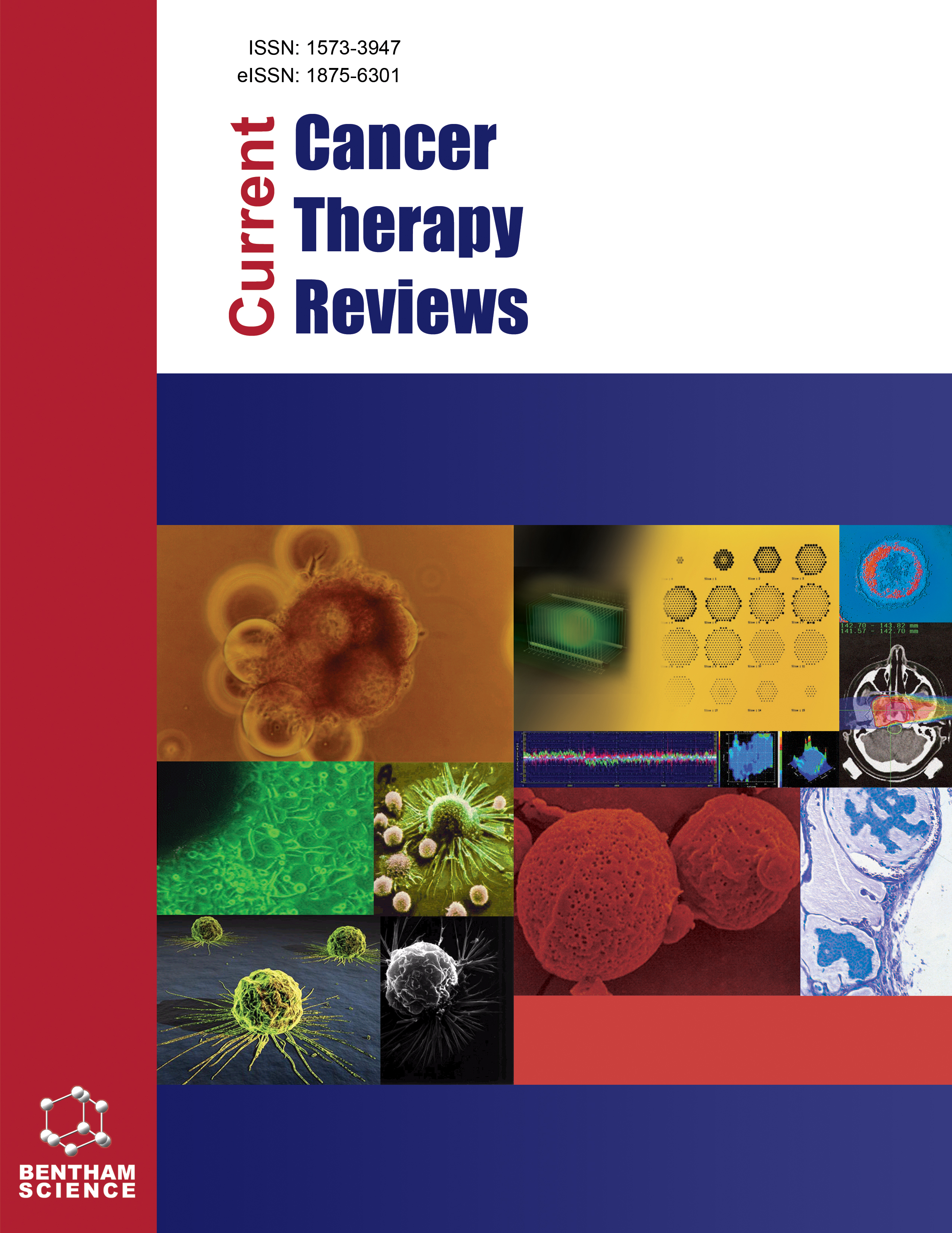- Home
- A-Z Publications
- Current Cancer Therapy Reviews
- Previous Issues
- Volume 11, Issue 1, 2015
Current Cancer Therapy Reviews - Volume 11, Issue 1, 2015
Volume 11, Issue 1, 2015
-
-
Pathology of the HPV-associated Oropharyngeal Carcinoma
More LessHuman papilloma virus (HPV)-associated oropharyngeal carcinoma (HPV-OPC) is increasing in many countries. It has distinct microscopic and molecular features as well as clinical aspects. As for microscopic view, two subtypes, non-keratinizing squamous cell carcinoma (NKSCC) and hybrid SCC (HSCC), 3 variants of SCC, undifferentiated carcinoma (UC), basaloid carcinoma (BC), and papillary squamous cell carcinoma (PSCC Read More
-
-
-
Radiology of Oropharyngeal Cancer - Institutional Experience and Literature Review -
More LessBy Ko MatsumotoThe basic anatomical and oncological properties of oropharyngeal cancer with appropriate radiological images are presented. The description is mainly divided into two categories; primary lesion and metastatic lymph nodes. Each of the categories is discussed in terms of the anatomy, oncology and current radiological imaging with emerging methods, such as FDG PET/CT and MRI diffusion imaging. Some interesting cas Read More
-
-
-
Rapidly Increasing Trends in Oropharyngeal Carcinoma Assessed by Worldwide Epidemiologic Analysis
More LessAuthors: Enyinnaya Ofo and Junkichi YokoyamaDue to the progressive decline in smoking and drinking, incidences of head and neck cancers have decreased markedly in the USA and European countries. However, incidences of oropharyngeal cancer (OPC) are rising worldwide in both nonsmokers and nondrinkers. Epidemiologic studies suggest a strong association between human papillomavirus (HPV) 16 infection, changing sexual behavior and cancer development. Whi Read More
-
-
-
Minimally Invasive Transoral Surgical Treatment for Oropharyngeal Carcinoma
More LessAuthors: Junkichi Yokoyama, Shinichi Ohba, Masataka Kojima and Mizuno SakaiIn a recent years, oropharyngeal carcinoma has continued to gradually increase throughout the world due to the prevalence of Human papillomavirus(HPV)-associated oropharyngeal carcinoma.Traditionally, the standard form of treatment employed was an open surgical procedure combining mandibulectomy with a free flap graft. However, many reports indicate that this procedure can result in a high degree of pos Read More
-
-
-
Epoch-making Treatment with Transoral Robotic Surgery for Oropharyngeal Carcinoma
More LessAuthors: Akira Shimizu, Mamoru Suzuki, Suren Krishnan and Junkichi YokoyamaTransoral Robotic Surgery (TORS) was reported as being one of the most minimally invasive surgery (MIS) procedures available by the University of Pennsylvania in 2005. TORS has increasingly been employed in the treatment of oropharyngeal carcinoma throughout the world on account of the various advantages including superior surgical manipulation of the oropharyngeal tissue, excellent visualization and accurate resection. Read More
-
-
-
Chemoradiation for Oropharyngeal Carcinoma for Organ Preservation
More LessAuthors: Shinichi Ohba, Junkichi Yokoyama, Masataka Kojima and Mizuno SakaiIn recent years, cases of HPV-positive oropharyngeal carcinomas (HPVOPCs) have continued to increase throughout world. In many cases, radiotherapy is conducted as HPVOPCs are considered to be more radiosensitive than HPV-negative tumors. However, smoking affects the radiosensitivity of HPVOPCs which typically results in a poorer prognosis than can be expected when treating HPVOPCs associated with n Read More
-
-
-
Transcervical Oropharyngectomy: A Clinically Focused Review
More LessThe controversial point of treatment for oropharyngeal cancer is the surgical approach and it is in transition, especially for resectable tumors. Transcervical oropharyngectomy with mandibulotomy is an oncologically valid surgical option for resectable T3–T4a oropharyngeal cancers and contraindications for transoral lateral oropharyngectomy. The approach without mandibulotomy allows for simple reconstruction and ha Read More
-
-
-
Targeted Therapy for Glioblastoma: Lessons Learned and Future Directions
More LessAuthors: Nicole A Shonka, Suprit Gupta and Pankaj K. SinghGlioblastoma is the most common adult malignant primary brain tumor, and carries a dismal prognosis. After initial standard radiation therapy and chemotherapy with temozolomide, few standard chemotherapy options are available. In the last two decades, a growing understanding of molecular pathogenesis of glioblastoma has turned our focus toward targeted therapy. This review will discuss our current understandin Read More
-
-
-
Cross Talks Between Oncoprotein Signaling Networks and Tumor Suppressor p53 in Breast Cancer
More LessAuthors: Nabilah Ibnat and Ezharul Hoque ChowdhuryOncogenic transformation of growth factors, growth factor receptors, transcription factors as well as important cellular proteins and their association with the principal tumor suppressor p53 may provide essential insights toward integrated therapy in breast cancer. In this review we discuss growth factor HER-2/neu receptor tyrosine kinase; FAK, non-receptor tyrosine kinase; TGF-β, and their roles in tumorigenesis in b Read More
-
Volumes & issues
-
Volume 21 (2025)
-
Volume 20 (2024)
-
Volume 19 (2023)
-
Volume 18 (2022)
-
Volume 17 (2021)
-
Volume 16 (2020)
-
Volume 15 (2019)
-
Volume 14 (2018)
-
Volume 13 (2017)
-
Volume 12 (2016)
-
Volume 11 (2015)
-
Volume 10 (2014)
-
Volume 9 (2013)
-
Volume 8 (2012)
-
Volume 7 (2011)
-
Volume 6 (2010)
-
Volume 5 (2009)
-
Volume 4 (2008)
-
Volume 3 (2007)
-
Volume 2 (2006)
-
Volume 1 (2005)
Most Read This Month
Article
content/journals/cctr
Journal
10
5
false
en


